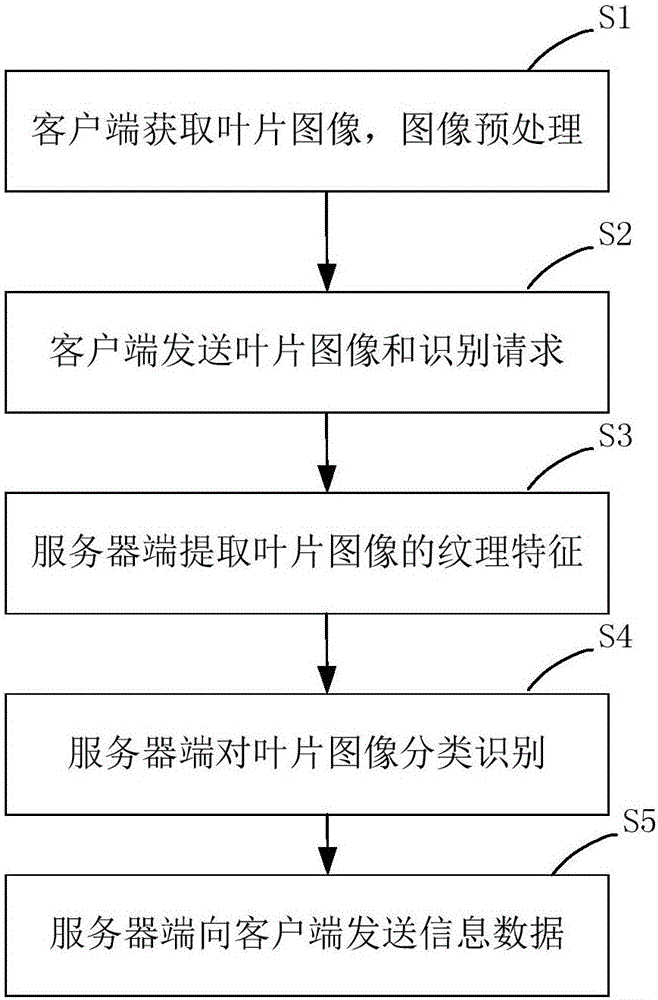Plant species identification method based on blade textural features and iOS platform
A technology of texture features and recognition methods, applied in character and pattern recognition, image data processing, electrical digital data processing, etc., can solve the problems of less information conveyed, unobtrusive expression, and labor and material resources consumption, and achieve high recognition rate and good quality. Multi-resolution, good denoising effect
- Summary
- Abstract
- Description
- Claims
- Application Information
AI Technical Summary
Problems solved by technology
Method used
Image
Examples
Embodiment
[0030] Such as figure 1 As shown, the plant species identification method based on leaf texture feature and iOS platform of the present invention comprises the following steps:
[0031] S1, the client acquires the blade image and preprocesses the image;
[0032] S2, the client transmits the preprocessed leaf image to the server, and sends a recognition request to the server;
[0033] S3, the server uses the contourlet transform algorithm to extract the texture features of the leaf image;
[0034] S4, the server side uses the extracted texture feature as the input of the trained SVM classifier, classifies and recognizes the leaf image, and obtains the classification number of the plant species;
[0035] S5, the server searches the plant species information database, and sends the plant species information data in step S4 to the client.
[0036] This embodiment adopts the C / S architecture, and uses the iOS mobile phone platform as the client to realize the collection of leaf ...
PUM
 Login to View More
Login to View More Abstract
Description
Claims
Application Information
 Login to View More
Login to View More - R&D
- Intellectual Property
- Life Sciences
- Materials
- Tech Scout
- Unparalleled Data Quality
- Higher Quality Content
- 60% Fewer Hallucinations
Browse by: Latest US Patents, China's latest patents, Technical Efficacy Thesaurus, Application Domain, Technology Topic, Popular Technical Reports.
© 2025 PatSnap. All rights reserved.Legal|Privacy policy|Modern Slavery Act Transparency Statement|Sitemap|About US| Contact US: help@patsnap.com

